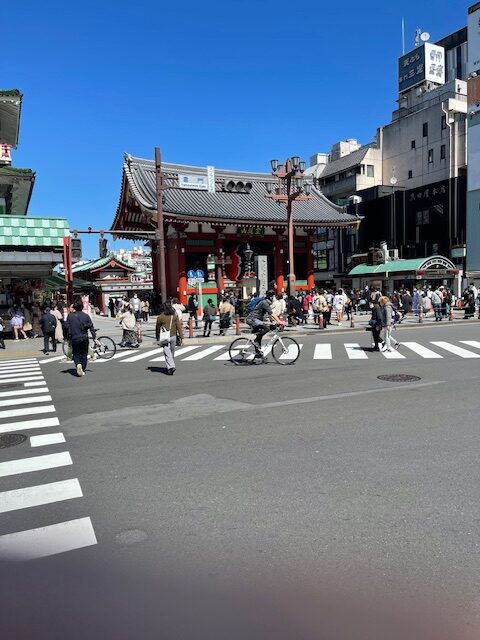
If your trip to Japan includes a visit to Kyoto, you might feel ‘templed-out’ by the time you return to Tokyo. However, if Kyoto (the old capital) isn’t on your itinerary, there are still plenty of fascinating temples to explore in the new capital. Below are five of my favourites.
Senso-ji Temple – Tokyo’s oldest and most significant Buddhist temple, is renowned for its iconic Kaminarimon Gate (MORE ON THIS)
Gotoku-ji Temple – A charming and unique temple known as the birthplace of the “manekineko” (beckoning cat) statues (MORE ON THIS)
Zojo-ji Temple – Historically significant Buddhist temple in the shadow of Tokyo Tower (MORE ON THIS)
Honmon-ji Temple-Temple with a striking five-story pagoda and extensive grounds (MORE ON THIS)
Jindai-ji Temple – Second oldest temple in Tokyo known for its beautiful gardens (MORE ON THIS)
Back to Quick Tips on Things to Do
Fellow Bitcoiner?
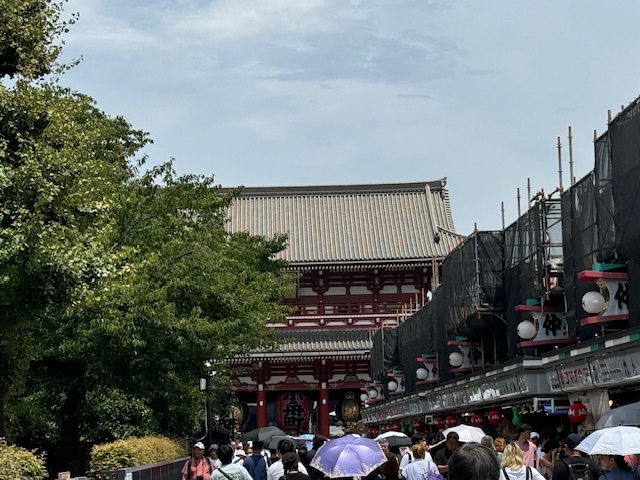
Senso-ji, also known as Asakusa Kannon Temple, is an ancient Buddhist temple located in the Asakusa district of Tokyo, in the shadow of the towering Tokyo Skytree. It is Tokyo’s oldest-established temple and one of its most significant. The temple is dedicated to Kannon, the bodhisattva of compassion. According to legend, in the year 628, two brothers fished a statue of Kannon out of the Sumida River. Even though they put the statue back into the river, it always returned to them. Consequently, Senso-ji was built nearby for the goddess Kannon. The temple was completed in 645, making it Tokyo’s oldest temple. Today, it attracts millions of visitors each year. The temple complex includes the iconic Kaminarimon (Thunder Gate), which leads to a bustling shopping street called Nakamise-dori, filled with traditional snacks and souvenirs. At the heart of the complex lies the main hall, known as the Hondo, where visitors can offer prayers and admire the beautiful architecture. Senso-ji is not only a significant religious site but also a vibrant cultural landmark, especially popular during festivals like Sanja Matsuri, which celebrates the three founders of Senso-ji with lively parades and traditional performances.
Admission Fee: None (although you can make a donation.) You may also need to pay for certain exhibits and events.
Access: No more than a 5-minute walk from Asakusa station (Ginza Line, Asakusa Line, Tobu Sky Tree Line, Tsukuba Express Line)
The Google map link is here.
Back to Temple List
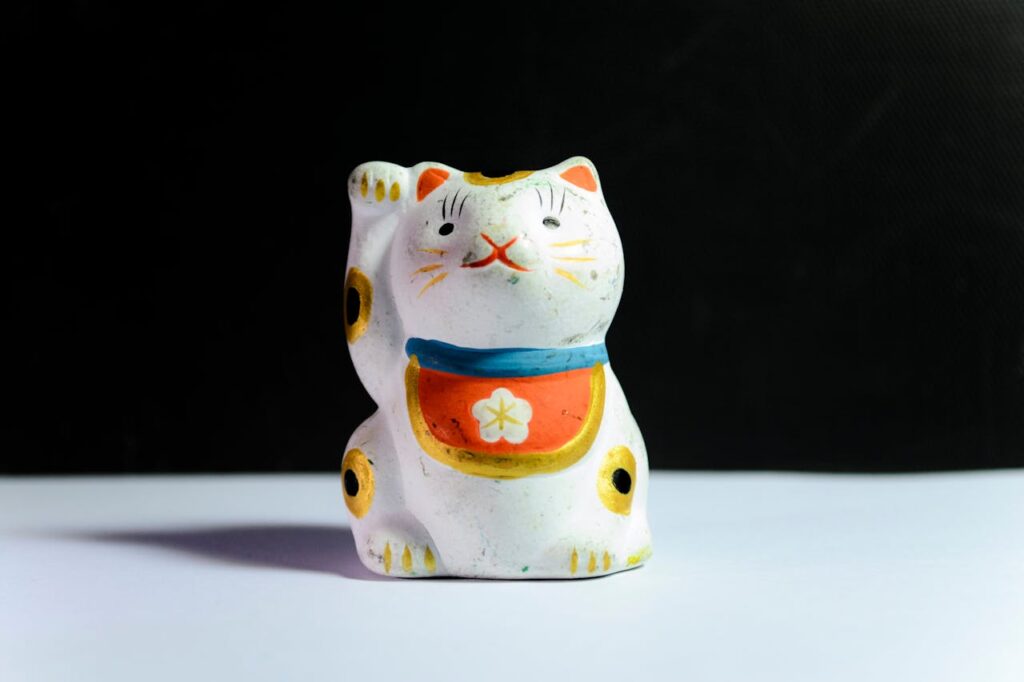
Gotoku-ji Temple, located in the Setagaya ward of Tokyo, is a must for felinophiles! This Buddhist temple is said to be the birthplace of the maneki-neko, or “luck-inviting cat figurine.” (see photo above) You can find these small statues, which portray a cat sitting up and beckoning with its front paw, all around Japan, and they have become popular all over the world with cat lovers. The temple is renowned for its unique connection to these maneki-neko statues, believed to bring good luck and fortune. According to legend, a feudal lord was saved from a storm by a beckoning cat, leading to the temple’s association with these iconic figures. The peaceful grounds of Gotoku-ji are filled with countless lucky cat figurines donated by worshippers, symbolizing the cat’s enduring legacy of good luck. Located away from the bustling center of Tokyo, Gotoku-ji Temple offers a serene and quiet retreat, making it an ideal stop for any cat lover interested in Japanese culture and history.
Admission Fee: None (although you can make a donation.) You may also need to pay for certain exhibits and events.
Access: Short 5-minute walk from either Miyanosaka or Yamashita stations on the Tokyo Metro Setagaya Line, 15-minute walk from Gotokuji station on the Odakyu Line.
The Google map link is here.
Back to Temple List
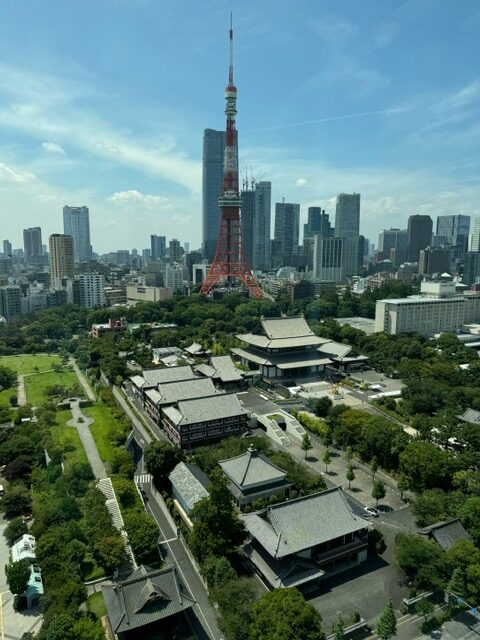
Zojo-ji Temple, located in the Shiba district of Tokyo, was founded in 1393 and relocated to its present site in 1598 by Tokugawa Ieyasu. The temple’s Sangedatsumon gate, dating from 1622, is the oldest wooden building in Tokyo and one of the few structures that survived World War II. While most of Zojo-ji’s buildings are recent reconstructions, the temple remains a significant cultural and historical site, known for its serene gardens, proximity to Tokyo Tower, and role as a venue for cultural events and religious ceremonies, such as New Year celebrations and a popular bean-throwing ceremony for Setsubun (event marking the beginning of Spring) in February. It also houses the Treasure Gallery Museum on the first basement floor of the Daiden (Great Hall), which was completed in 2015 and features a variety of exhibits, including a detailed 1:10 scale model of the Taitokuin Mausoleum and paintings by Kanō Kazunobu, offering a great opportunity to learn about the history and culture of Japan
Admission Fee: None for the temple, but admission fee (700 yen at time of writing) is required to enter the Treasure Gallery Museum.
Access: Short 3-minute walk from Onarimon or Shiba-Koen subway stations on the Mita Line, 5-minutes from Daimon station on the Oedo subway line, and a 10-minute walk from Hamamatsucho on the JR Yamanote line.
The Google map link is here.
Honmon-ji, also known as Ikegami Honmon-ji, is a significant temple of the Nichiren Shū sect located in the Ota ward of Tokyo. Built at the site where Nichiren, the founder of the Nichiren sect, is said to have passed away, the temple also became the final residence of his disciple, Nikko. The temple grounds house the administrative headquarters of the Nichiren Shū and contain numerous buildings, most of which have been reconstructed since the bombing in 1945. Notable structures include the Important Cultural Property designated five-story pagoda built in 1608, the kyōzō (repository of religious writings) built in 1784, and the hōtō (a traditional Buddhist structure housing relics), built in 1781 where Nichiren was cremated. The temple hosts the large O-Eshiki festival from October 11 to 13, attracting thousands of worshippers with its elaborate lantern displays and parades. Additionally, the temple holds a memorial tablet for the American warship USS Oneida, which sank in 1870. The temple’s historical and religious significance, coupled with its serene atmosphere, makes it a popular destination for both worshippers and tourists
Admission Fee: None (although you can make a donation.) You may also need to pay for certain exhibits and events.
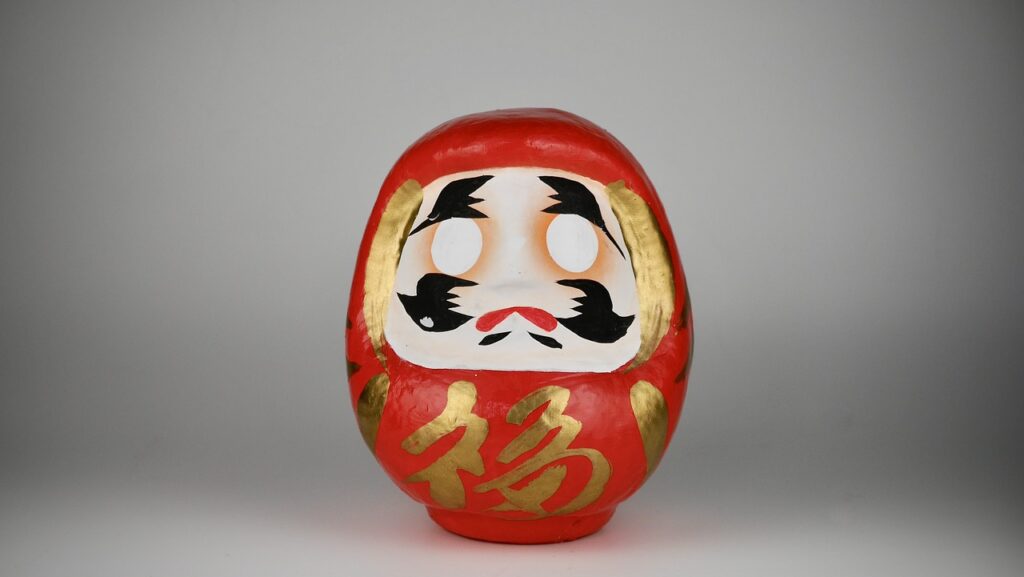
Jindai-ji Temple, located in Chofu, Tokyo, is the second oldest temple in the Tokyo area, founded in 733 AD by the monk Gyoki during the Nara period. Legend states that the temple was established after water deities blessed the site. The temple has since been a significant center for worship and pilgrimage, revered for its connections to deities associated with protection and blessings. Key features include the main hall (Hondo), the Kitaro Chaya teahouse, the Jindai Botanical Gardens, Jindai-ji Onsen hot springs, and numerous Daruma statues (similar to the one shown in the photo above). The temple grounds are lush with greenery, streams, and ponds, and feature notable structures such as the thatched-roof main gate and Ganzan Daishi hall, where the daily Goma fire ritual is performed. It also hosts several special events, such as the Daruma Doll Fair in March, the Jindai-ji Temple Soba Festival, the Chrysanthemum Festival in November, and New Year’s celebrations. Jindai-ji Temple offers a blend of historical reverence, cultural significance, and natural beauty, making it a cherished site for spiritual practices and leisurely visits.
Admission Fee: None (although you can make a donation.) You may also need to pay for certain exhibits and events.
Access: Unless you enjoy a long walk, you will need to take a bus from any of the following stations to get to Jindai-ji Temple – Chofu or Tsutsujigaoka stations on the Keio Line, or Mitaka or Kichijoji stations on the Chuo/Sobu Line. The buses will take around 15 minutes.
